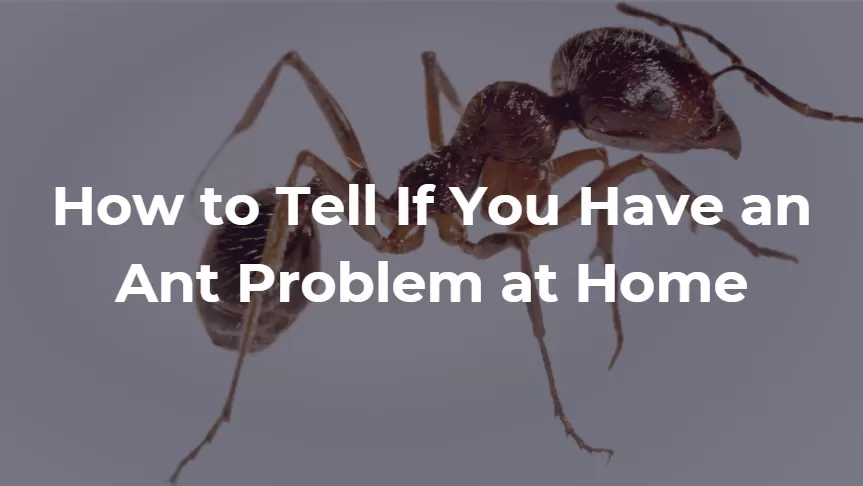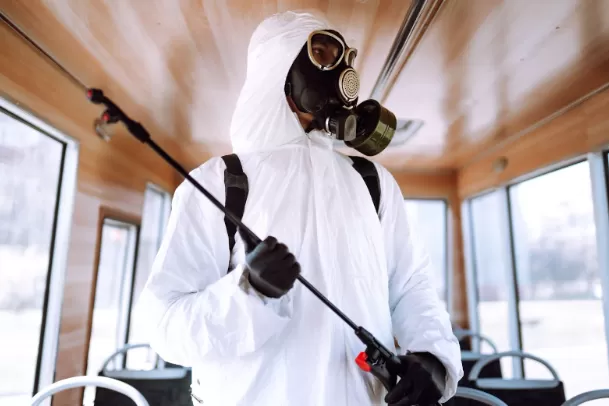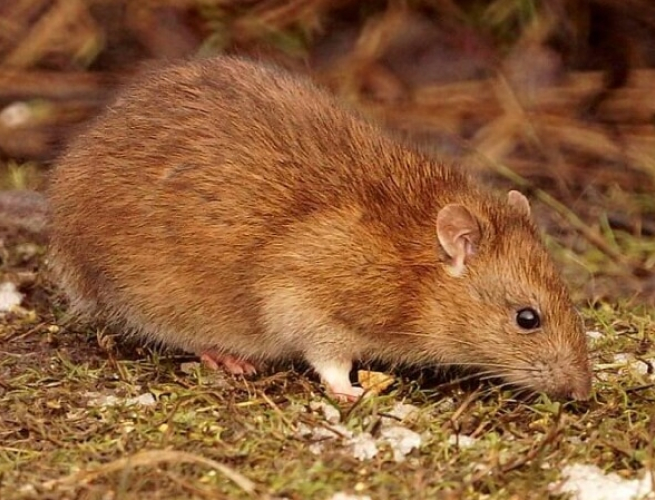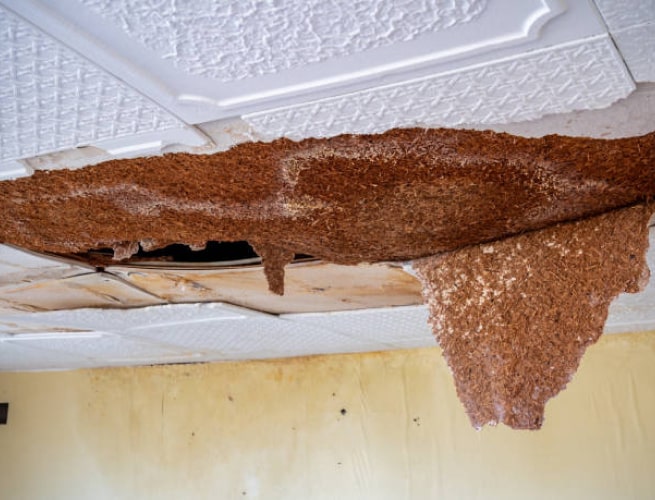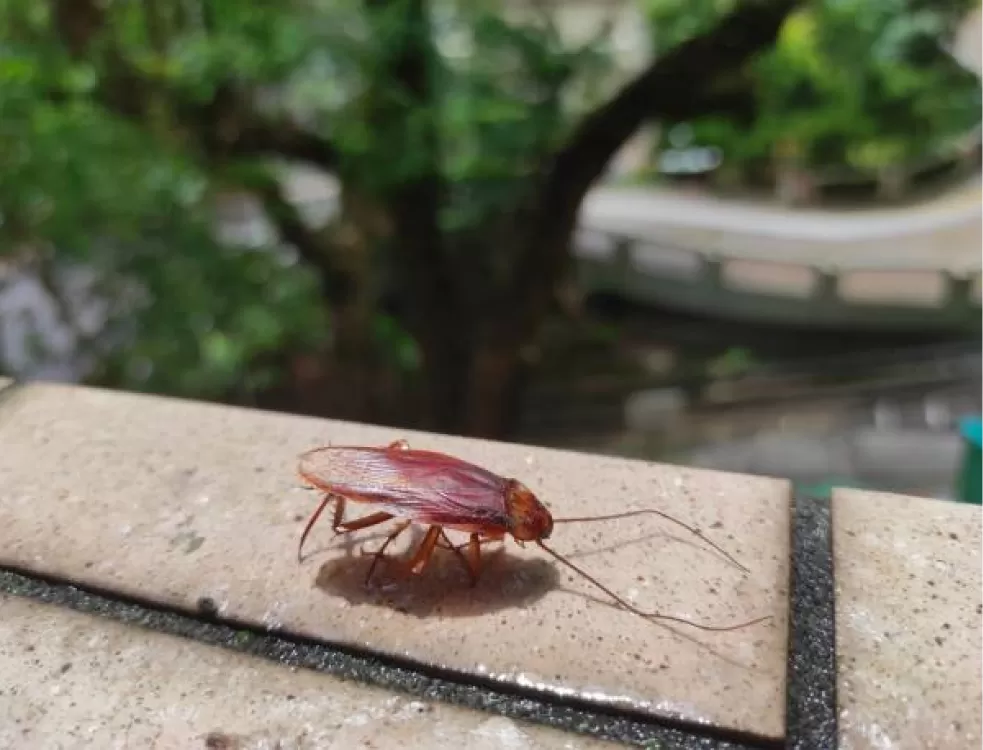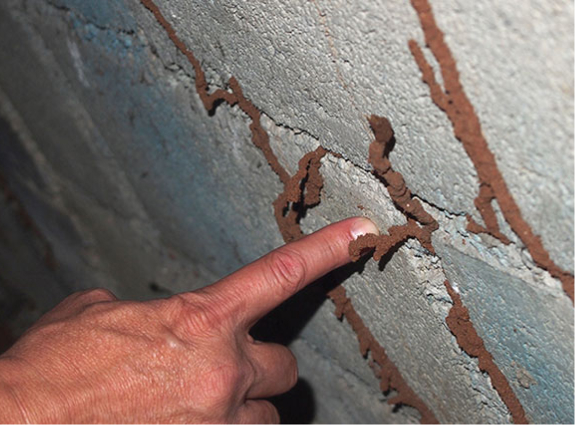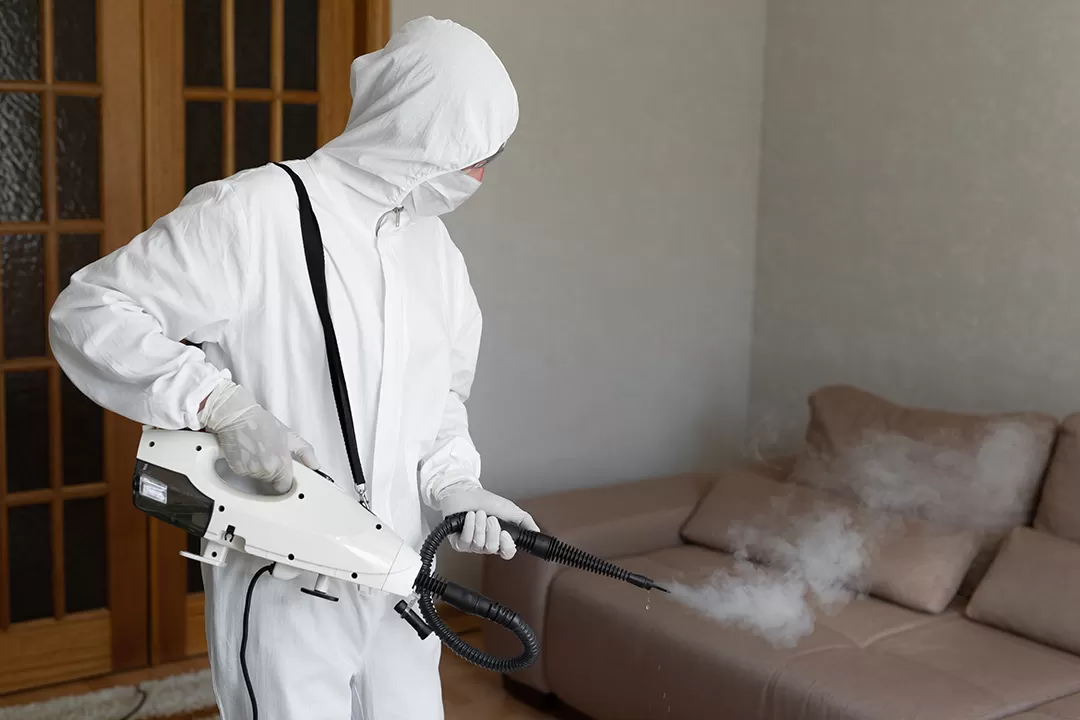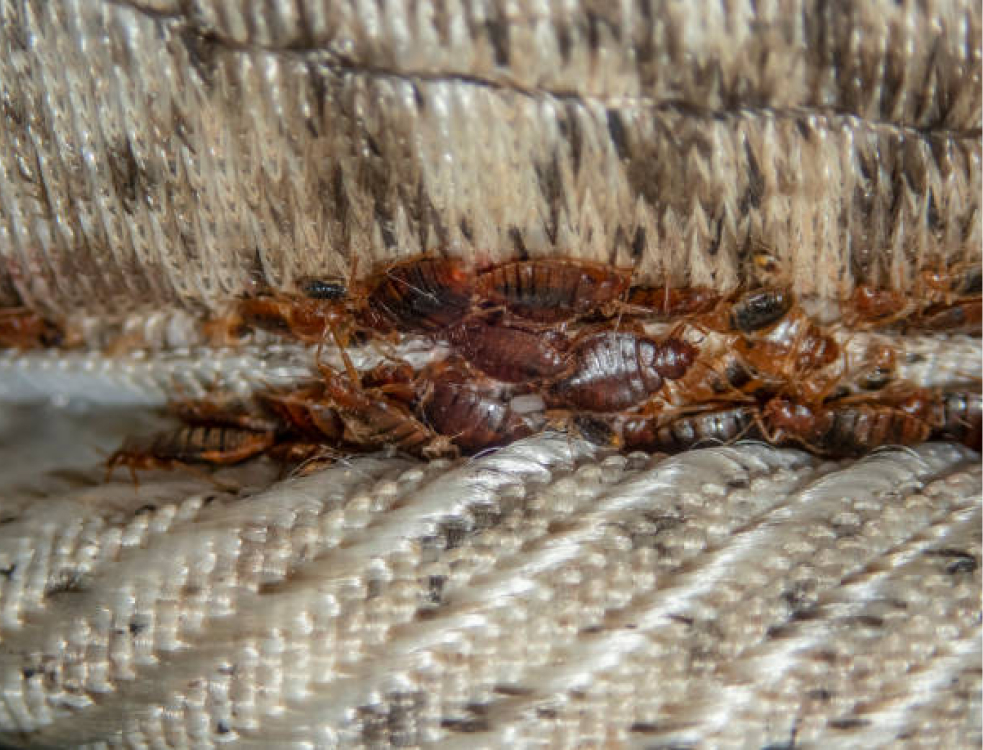Ants are not merely a common nuisance; they can indicate underlying issues within your home. Understanding these small insects and recognizing the signs of an infestation is essential for maintaining a healthy living environment. This guide aims to assist you in identifying ant-related problems, the risks they may pose, and effective strategies for their elimination. Opting for Aardwolf Pestkare can offer you the expert assistance necessary for achieving long-term ant control and prevention, making it an effective ant pest control solution.
Key Takeaways:
Seeing ants in your home, finding ant trails, and noticing ant nests are all signs of an ant infestation.
Attractants in your home and outdoor factors can contribute to an ant problem.
The risks of an ant infestation include property damage, contamination of food, and potential health risks.
What Are Ants?
Ants are small, social insects that belong to the family Formicidae. They are recognized for their complex colonies and a wide variety of species, including sugar ants, carpenter ants, and ghost ants.
These remarkable creatures display unique behaviors, such as forming ant trails and constructing intricate nests, which highlight the roles of individuals within an ant colony. In this social structure, worker ants fulfill various duties, including serving the queen ant, gathering food, and maintaining the overall structure of their community.
With over 12,000 known ant species worldwide, their adaptability and interactions with the environment can have a significant impact on pest control and management strategies in both urban and rural contexts.
What Are the Signs of an Ant Infestation?
Recognizing the signs of an ant infestation is essential for timely intervention and effective pest control, particularly in urban environments such as Singapore. Effective ant control in Singapore requires the correct identification of ant species.
Common indicators of an infestation include various warning signs of an ant problem:
- The presence of ants within the home, such as ants found in food supplies,
- The discovery of ant trails leading to food sources, which are often left by foraging ants,
- The identification of nests concealed within walls or beneath floors.
A significant number of live ants or evidence of ant nests may suggest a potential pest issue that necessitates immediate attention from a professional pest control service. If ants contaminate food or you have an ant infestation in your home, it is crucial to contact a professional ant control service. Prompt action is critical to prevent further escalation and to maintain a pest-free environment.
Seeing Ants in Your Home
The sighting of ants within a residential space is often the initial indication of a potential ant infestation, which may lead to a more significant pest issue if not addressed promptly. This is often a sign of an ant infestation in your home.
These industrious insects typically seek food to transport back to their colony. Consequently, if individuals observe them navigating through the kitchen or pantry, it is imperative to take action before the situation escalates. A reliable ant pest control service can help get rid of these ants effectively.
The presence of ants can create an undesirable living environment and may also signify a more serious underlying issue, such as inadequate sanitation practices or structural vulnerabilities within the home. Taking steps to prevent an ant infestation is crucial for maintaining a pest-free environment.
To effectively address this issue, it is advisable to:
- Identify the species of ant in order to tailor the response appropriately.
- Store food in airtight containers to minimize attracting ants.
- Seal any crevices and entry points through which ants may gain access.
Managing an ant problem can often be complex; therefore, engaging professional pest control services is essential for ensuring complete eradication of the ants and preventing future infestations. Professional ant control services can provide the necessary control treatment.
Finding Ant Trails
The presence of ant trails is a clear indication of ant activity within a residence, as these pathways are formed by foraging ants that communicate with one another while searching for food and resources. Ants you see in trails are likely worker ants bringing supplies back to the colony. Typically, these trails lead to food sources or nesting sites, signifying an established ant presence and the necessity for immediate pest management interventions. Recognizing and tracing these trails can assist in identifying the points of entry into the home, thereby facilitating the development of effective ant control strategies to eliminate their paths and prevent future infestations. Spraying repellent insecticide before ant trails can help disrupt the ant pathways.
The formation of these trails occurs when ants deposit pheromones along their route, which serves as a significant method of communication that enables other ants to navigate efficiently to abundant food sources. The ants bring pheromones to the queen ant to share the location of food sources. Understanding this behavior is essential, as it not only highlights the collaborative nature of ants but also indicates that their colony is active and potentially expanding, necessitating prompt action.
To effectively track these trails, homeowners should consider the following recommendations:
- Observe peak activity times, which typically occur during warmer months when food is more readily available.
- Utilize a flashlight to identify trails, especially in dimly lit areas or behind furniture.
- Follow the trails back to their origin in order to locate nests.
Once the source of the infestation is identified, homeowners can implement either store-bought solutions or engage professional pest control services to disrupt ant patterns and mitigate the invasion.
Noticing Ant Nests
The presence of ant nests in and around a property is a strong indication of an established ant colony nearby, which can present significant challenges in maintaining a pest-free environment. Ant nests can often house a large number of live ants. These nests may be located in various areas, such as beneath floors, within wall cavities, or outdoors in gardens, and are often constructed in concealed locations to protect the queen and her workers. Identifying the location of these nests is essential for implementing effective ant control measures and may necessitate the expertise of a professional pest control service to ensure thorough eradication.
Understanding the different types of ant nests and their specific locations can significantly enhance pest management efforts. Knowing the types of ants is important for identifying the correct ant control solutions. The following are some common types:
- Carpenter Ant Nests: Typically found within wood, especially in areas exhibiting moisture damage.
- Fire Ant Mounds: Commonly observed in open, sunny areas such as lawns and fields.
- Pavement Ant Nests: Usually located beneath rocks or pavement.
Recognizing these locations not only aids in monitoring ant movement but is also critical for developing comprehensive pest control solutions. Reliable ant pest control services can identify these nests and provide effective treatment.
Aardwolf Pestkare specializes in this domain, employing advanced techniques and equipment to accurately locate nests. This approach ensures that ant eradication efforts are both targeted and effective, thereby safeguarding your home from potential infestations.
Why Do You Have an Ant Problem?
Understanding the underlying causes of an ant infestation is crucial for effective pest control and for developing preventive measures to mitigate future occurrences. Ant control services in Singapore can provide insights into ant biology and its behavior.
Common attractants, such as food spills, pet food, and moisture, can lure ants into residential spaces, while specific outdoor conditions, including nearby vegetation or improperly stored garbage, can create conducive environments for these pests.
By addressing these attractants and gaining insight into ant behavioral patterns, homeowners can implement targeted strategies to prevent ants from entering their living spaces. Ant control solutions should focus on eliminating these attractants.
Attractants in Your Home
Attractants within the home are significant contributors to ant infestations, as these pests are primarily attracted to food sources, moisture, and specific scents. Ants are attracted to food spills, crumbs, and sugary substances. Common household items, such as crumbs, sugary substances, and pet food, can act as beacons for ants, prompting them to invade living spaces in search of sustenance. Ants could also be attracted by moisture-prone areas. Identifying and eliminating these attractants is essential for preventing the establishment of ant infestations and plays a pivotal role in effective pest management. This approach can help prevent ants from entering the home.
To effectively deter these unwelcome intruders, it is crucial to understand where they are most likely to locate their preferred resources:
- Food spills left on counters or floors
- Open containers of food
- Moisture-prone areas such as sinks, bathrooms, and basements
- Food remnants in pet bowls or around pet areas
Diligent cleaning of these areas is imperative. It is advisable to begin by wiping down surfaces with a mixture of vinegar and water, which not only removes odors but also eliminates potential food sources.
Furthermore, all food items should be stored in airtight containers, and any open packaging should be disposed of promptly. This is a key way to get rid of ant infestation. Routine inspections for leaks, along with the maintenance of dry conditions, will further reduce moisture levels.
Adhering to these practical recommendations can significantly diminish the likelihood of an infestation occurring in the home.
Outdoor Factors
Outdoor factors significantly influence the attraction of ants to residential properties. Elements such as overgrown vegetation, open garbage bins, and nearby nests can create pathways for these pests to infiltrate homes. Local pest control companies can help address these factors. Understanding the interaction between the outdoor environment and the home is essential for preventing ants from entering and establishing colonies. Effective ant pest control includes managing outdoor factors to prevent an ant infestation. Regular maintenance and strategic landscaping can markedly reduce the likelihood of an ant problem developing. This can help solve the problem as ants may find other routes into the home.
Along with obvious contributors such as waste and dense foliage, environmental conditions, including moisture levels and temperature, also play a critical role in ant behavior. Areas with stagnant water or leaking outdoor faucets can provide a moist environment conducive to ant activity, while sunny, warm patches in the yard may attract them for nesting purposes.
Therefore, regular inspections and maintenance should prioritize the following actions:
- Removing standing water sources.
- Clearing debris and leaf litter where ants may find shelter.
- Pruning overgrown shrubs and trees to diminish potential hiding spots.
- Sealing any gaps or holes in the exterior of the home to prevent indoor access.
By proactively addressing these outdoor factors, homeowners can significantly reduce the risk of an ant invasion, thereby ensuring that their living spaces remain comfortable and free of pests.
How to Identify the Type of Ant in Your Home?
Identifying the type of ant present in a residence is essential for implementing effective pest control measures, as various ant species demonstrate distinct behaviors, nesting habits, and attractants. A thorough understanding of ant biology can aid in establishing the most appropriate strategies for ant control and removal.
Common ant species found in Singapore include sugar ants, carpenter ants, and ghost ants, each necessitating specific methods to effectively manage their populations and prevent future infestations.
Color and Size
The color and size of ants are critical factors in the identification of ant species, as these physical characteristics can effectively differentiate between common types of ants found within residential settings. For example, sugar ants are generally light brown, whereas carpenter ants are larger and may present in reddish or black hues. A comprehensive understanding of these variations is essential for selecting appropriate ant control solutions and implementing effective pest management strategies.
Ant color and size not only assist in their identification but also correlate with their specific behaviors and nesting habits.
- Carpenter ants, for instance, tend to nest in moist and decaying wood, and their larger size facilitates the excavation of these materials with relative ease.
- In contrast, fire ants are recognized for their aggressive behavior and are typically a reddish-brown color, preferring to establish underground nests in open, sunny areas.
These distinctions in size and coloration can significantly influence how these insects interact with their environments and with other species, underscoring the necessity of meticulous observation for effective pest control.
Nesting Habits
Nesting habits vary significantly among ant species, influencing their behavior and the strategies required for effective pest control. For instance, sugar ants typically construct nests in soil or beneath rocks, while carpenter ants prefer to nest within wooden structures, including residential properties, which can lead to potential property damage. Understanding these nesting behaviors is crucial for developing targeted pest control strategies that address the unique challenges posed by each ant species.
The selection of habitat and nesting preferences of ants can significantly impact their interactions with the environment and, consequently, the methods required for their management. Recognizing ant nesting behaviors not only assists in identifying potential problem areas but also provides valuable insight into the life cycles of these pests.
Common nesting locations may include:
- Soil beneath grass or shrubs for ground-nesting species.
- Hollowed trees or decaying wood, particularly for carpenter ants.
- Home foundations, inside walls, or areas with moisture for other species.
To locate these nests, one should observe trails leading to food sources or examine areas where ant activity has been noted. Management strategies may involve the elimination of moisture sources, sealing access points, and, if necessary, applying targeted treatments directly to the nests.
A comprehensive understanding of an ant’s specific nesting habitat is essential for the implementation of efficient pest management practices.
Feeding Preferences
Feeding preferences among various ant species serve as critical indicators for their identification and provide insights into their behavior within residential environments. For example, sugar ants are typically attracted to sweet substances, whereas carpenter ants may exhibit a preference for protein sources or foods high in fat. Recognizing these feeding habits is essential for developing effective pest control solutions that specifically target their attractants and minimize the risk of infestations.
The dietary preferences of different ant species not only indicate their attractants but also influence their foraging behavior. For instance, sugar ants generally seek out sugary substances, which often leads them to kitchens and pantries. In contrast, carpenter ants are more frequently found near protein sources, such as meats or pet food, driven by their affinity for polymer compounds.
By understanding these distinct feeding patterns, homeowners can take proactive measures to eliminate food sources that attract these pests. Strategically placed targeted bait can be deployed based on the identified species, ensuring that pest control measures are both efficient and environmentally responsible. Ultimately, adapting strategies to align with known feeding preferences enhances the success of efforts to keep these unwelcome visitors at bay.
What Are the Risks of an Ant Infestation?
The risks associated with an ant infestation extend beyond mere inconvenience and can result in substantial property damage, contamination of food supplies, and numerous health hazards.
For example, carpenter ants have the potential to weaken wooden structures over time, while sugar ants frequently invade pantries, thereby posing a significant risk of food contamination.
Recognizing these risks underscores the importance of engaging a reputable pest control service to effectively manage and eradicate ant problems before they escalate.
Property Damage
Property damage resulting from ant infestations, particularly from carpenter ants, can be significant and financially burdensome to rectify. These ants excavate wood to construct their nests, often undermining the structural integrity of homes and other buildings. Timely intervention and the implementation of effective pest control measures are crucial to prevent further damage and maintain the safety and stability of the property.
Carpenter ants are typically attracted to damp or decaying wood, making it essential to conduct regular inspections of areas such as basements, attics, and window frames.
- A single infestation can result in repair costs that may reach hundreds or even thousands of dollars, depending on the extent of the damage.
- Common repairs may include the replacement of beams, studs, or plywood, which incur not only material costs but also labor expenses.
As these pests develop extensive tunnel systems within wooden structures, allowing them to proliferate for an extended period can lead to increasingly serious and costly repairs. Therefore, early detection, combined with professional pest control services, is imperative to protect the property from significant damage and to ensure a long-lasting resolution.
Contamination of Food
The contamination of food due to ant infestations poses a significant concern, as ants are known to invade pantries and food storage areas, introducing bacteria and pathogens. The presence of ants within residential spaces can lead to a pest issue that compromises food safety and causes considerable distress among homeowners. Therefore, implementing effective pest control measures is essential to ensure that food supplies remain uncontaminated.
The health implications associated with consuming food contaminated by ants can be serious and varied. When ants infiltrate food supplies, they may introduce harmful microorganisms that can result in illnesses ranging from mild digestive discomfort to severe infections.
To better understand the associated risks, consider the following factors:
- Bacterial Transmission: Ants can carry bacteria such as Salmonella and E. coli on their bodies, thereby transferring these pathogens to food products.
- Allergic Reactions: Certain individuals may experience allergic reactions to proteins present in ant body parts or waste.
- Infestation Spread: Once ants locate a food source, they release pheromone trails that attract additional ants, exacerbating the infestation.
Effective pest management is crucial not only for the immediate elimination of ants but also for maintaining a clean and safe environment that prevents future infestations. Regular inspections and stringent sanitation practices are key measures to effectively safeguard residential spaces against the health risks posed by these insects.
Health Risks
Ant infestations can present various health risks, particularly through the contamination of food and surfaces that ants have traversed. Certain species of ants have the potential to carry disease-causing bacteria, which may lead to health complications for residents, particularly vulnerable populations such as children and individuals with compromised immune systems. Therefore, addressing an ant infestation promptly with the assistance of a professional pest control service is essential for mitigating these health risks and ensuring a safe living environment.
Along with the direct health implications, the presence of ants can significantly disrupt daily life. Their intrusion can be distressing, leading to increased stress and anxiety for homeowners. If left unaddressed, ants can also cause property damage and compromise food supplies.
Professional prevention and control services are critical not only for managing current infestations but also for implementing ongoing strategies to prevent future occurrences. This proactive approach encompasses:
- Conducting thorough inspections
- Identifying potential entry points
- Utilizing safe and effective treatments
- Providing education on maintaining clean environments
Recognizing the multifaceted impacts of an ant infestation highlights the necessity of timely professional intervention, which is a vital step toward safeguarding one’s health and overall well-being.
How to Get Rid of Ants?
Eliminating ants necessitates a strategic approach that may involve both do-it-yourself methods and the expertise of professional pest control services to ensure effective removal and prevention.
Homeowners may initially attempt various DIY techniques to reduce ant populations, such as employing natural repellents and sealing potential entry points. However, persistent infestations typically require the intervention of professional pest control to address the issue comprehensively.
It is essential to understand the most effective strategies for maintaining a pest-free home.
DIY Methods
DIY methods for ant removal can serve as an effective initial approach to managing ant populations within the home, employing natural repellents and barriers to deter these pests.
While it is essential to implement these preventive measures, homeowners often find it necessary to experiment with various techniques to identify which is most effective in their specific circumstances.
One common DIY solution involves creating a natural barrier using substances such as diatomaceous earth, which can be sprinkled around potential entry points to repel ants. Additionally, maintaining cleanliness in the home and storing food in airtight containers can significantly reduce attractants.
Traps made from simple household ingredients, such as a mixture of borax and sugar, can effectively lure and eliminate ants, offering a non-toxic solution to the problem.
It is important to recognize that if DIY efforts do not produce satisfactory results, or if the infestation escalates, homeowners should not hesitate to seek the assistance of a professional pest control service to achieve a more sustainable resolution.
Professional Pest Control Services
Professional pest control services are instrumental in effectively managing ant infestations, employing targeted strategies and specialized knowledge to eradicate these pests from residential properties. Experts in the field can accurately identify the ant species involved, assess the severity of the infestation, and implement customized pest management plans that ensure comprehensive removal and long-term prevention. By engaging a reputable pest control company, homeowners can achieve a pest-free environment with minimal disruption to their daily lives.
These professionals not only provide valuable insights but also possess access to advanced tools and techniques that enhance their effectiveness. In contrast to do-it-yourself approaches, which often rely on over-the-counter solutions that merely address surface symptoms, expert pest control employs a comprehensive strategy designed to address the root causes of infestations. This approach includes:
- Conducting a thorough inspection of the property to identify entry points and nesting areas.
- Applying targeted treatments appropriate for the specific ant species identified.
- Implementing ongoing monitoring and scheduling follow-up visits to ensure complete eradication.
Moreover, by opting for professional pest management, homeowners can have peace of mind knowing that trained technicians are managing the situation safely and efficiently, thereby reducing chemical exposure and safeguarding the health of their families and pets.
How to Prevent Future Ant Infestations?
Preventing future ant infestations necessitates a proactive approach that includes maintaining cleanliness, sealing potential entry points, and eliminating attractants that may entice ants into the home.
Consistent housekeeping practices, such as wiping surfaces, properly storing food, and addressing moisture issues, are essential in deterring ants from establishing a presence.
By implementing strategic pest management measures, homeowners can substantially diminish the risk of recurring ant problems.
Keep Your Home Clean
Maintaining a clean home is one of the most effective strategies for preventing ant infestations, as a tidy environment significantly reduces the availability of food sources that attract these pests. Regular cleaning of surfaces, promptly addressing spills, and properly storing food can deter ants from entering and establishing colonies within the home. By cultivating a habit of cleanliness, homeowners can create an inhospitable environment for ants, thereby minimizing the likelihood of infestations.
Furthermore, consistency in cleaning is essential; it is not merely about conducting a thorough clean occasionally, but rather about developing a routine that incorporates daily, weekly, and monthly tasks.
- Daily: Wipe down kitchen counters and dining tables after meals.
- Weekly: Sweep or vacuum floors to eliminate crumbs and debris.
- Monthly: Deep clean pantry shelves to remove any spilled food items.
Additionally, attention to outdoor areas such as gardens and porches is equally important. Keeping these spaces tidy not only enhances the overall appearance of the home but also reduces the likelihood of ants migrating indoors. By integrating these cleaning practices, one can maintain a pest-free environment, rendering the home less appealing to ants and other unwanted pests.
Seal Entry Points
Sealing entry points in your home is essential for effective pest management and for preventing ants from infiltrating your living space. Common entry points, such as gaps around windows, doors, and plumbing, should be thoroughly inspected and sealed to block potential access routes for these pests. By taking proactive measures to secure your home, you can significantly decrease the likelihood of an ant infestation.
The importance of identifying and effectively sealing these entry points cannot be overstated, as even the smallest openings can act as gateways for persistent ants. It is advisable to begin your inspection by checking the following areas:
- Windows: Examine seals and sills for any cracks or damage.
- Doors: Ensure that weather stripping is intact and consider installing door sweeps.
- Plumbing: Investigate areas where pipes enter and exit your home for gaps.
- Foundation: Inspect the base of your house for any cracks and voids.
Utilizing high-quality caulk or expanding foam can effectively fill these gaps, providing a long-lasting deterrent against unwanted visitors. Sealing these entry points not only helps maintain the integrity of your home but also fosters a healthier, pest-free environment.
Eliminate Attractants
Eliminating attractants is a crucial step in preventing ant infestations, as it removes the food sources that draw these pests into residential spaces. By appropriately storing food, promptly cleaning up spills, and addressing moisture issues, individuals can significantly reduce the likelihood of attracting ants. Implementing these pest control measures can help establish an unwelcoming environment for ants, thereby maintaining a home free from infestations.
Addressing the factors that attract these unwanted visitors necessitates consistent effort and a proactive approach. By ensuring that food is stored in airtight containers and regularly inspecting surfaces for crumbs or residues, one can inhibit ants’ ability to locate sustenance. Proper sanitation is essential; therefore, it is advisable to implement a routine that includes:
- Wiping down kitchen counters daily
- Vacuuming floors to eliminate crumbs
- Regularly cleaning pet bowls
Controlling moisture levels is equally critical, as ants are attracted to damp areas. Repairing leaks, utilizing dehumidifiers, and ensuring proper drainage around the home will help reduce their appeal. By systematically targeting both food sources and moisture, one can create an effective barrier against potential ant infestations.
Why Choose Aardwolf Pestkare for Ant Control?
Selecting Aardwolf Pestkare for ant control guarantees access to expert assistance from seasoned professionals who possess a thorough understanding of ant behavior and its biology and the most effective treatment methods to get rid of ants.
Committed to delivering reliable pest control services, Aardwolf Pestkare employs a comprehensive approach specifically tailored to address the unique challenges of your pest issues. Their proficiency in identifying ant species in Singapore and implementing targeted solutions ensures a pest-free environment for both residential and commercial properties. Their pest control services in Singapore are highly recommended.
Experienced and Knowledgeable Technicians
Aardwolf Pestkare employs a team of experienced and knowledgeable technicians who specialize in ant control services, ensuring that pest issues are addressed with the highest level of expertise. These professionals possess an in-depth understanding of ant biology and behavior, enabling them to accurately identify species and effectively manage infestations. Homeowners can have confidence that their ant problems will be resolved efficiently and safely by Aardwolf Pestkare. Whether dealing with carpenter ants, sugar ants, or ghost ants, their professional ant control service ensures effective solutions.
The technicians undergo rigorous training and certification, which equips them with advanced skills in the latest pest management techniques. This commitment to ongoing education ensures that they remain informed about the most effective methods for controlling ant populations, while also prioritizing safety and environmental considerations.
Recognizing the unique challenges posed by different ant species, Aardwolf Pestkare’s expertise encompasses a variety of eradication strategies tailored to specific situations. These strategies include:
- Understanding ant nesting habits and food sources
- Utilizing eco-friendly products whenever possible
- Implementing preventative measures to avoid future infestations
With such qualifications, Aardwolf Pestkare not only effectively eliminates current infestations but also provides homeowners with comprehensive guidance to prevent recurrence and prevent an ant infestation.
Safe and Effective Treatment Methods
Aardwolf Pestkare employs safe and effective treatment methods that prioritize the health and safety of clients as well as the surrounding environment, all while ensuring thorough ant control. The professionals at Aardwolf Pestkare assess each situation to determine the most appropriate solutions, utilizing methods that comply with safety standards and regulations without compromising effectiveness. This commitment to safety and efficacy distinguishes Aardwolf Pestkare within the pest control industry and as a top ant exterminator in Singapore.
With a strong emphasis on sustainability, the team develops tailored strategies that address the unique needs of each client. The process commences with a comprehensive inspection of the premises to identify ant species and potential entry points. Following this assessment, Aardwolf Pestkare implements a variety of treatment options, which include:
- Biological methods that utilize natural predators to manage ant populations.
- Targeted baiting systems that attract and eliminate ants while minimizing environmental impact.
- Barrier treatments designed to prevent future infestations, thus ensuring the long-term safety and comfort of clients.
This personalized approach not only enhances the effectiveness of the ant control process but also provides clients with reassurance that their health and environment are the highest priority. By incorporating customer feedback and environmental considerations, the specialists continually refine their techniques, establishing a service that is both responsive and responsible. They ensure the control treatment is effective and sustainable.
Comprehensive Pest Control Services
Aardwolf Pestkare provides comprehensive pest control services that cover a wide array of solutions for ant control and other pest-related issues, ensuring that clients receive holistic management for their pest problems. Their thorough assessments and tailored treatment plans effectively address the root causes of infestations, delivering lasting solutions that go beyond mere treatment. By selecting Aardwolf Pestkare, clients can be assured that their homes will remain pest-free, supported by ongoing assistance and follow-up services. They offer reliable ant pest control services that are second to none.
What distinguishes this service is their unwavering commitment to not only address existing infestations but also to implement preventive measures that mitigate the risk of future issues. Following the initial treatment, clients can anticipate a detailed follow-up plan, which includes:
- Regular inspections to monitor for any signs of renewed pest activity
- Recommendations for home maintenance improvements to reduce pest attraction
- Access to a dedicated customer support team available to address any inquiries
This proactive approach ensures that clients are not only relieved of current pest challenges but also equipped with the knowledge and resources necessary to maintain a pest-free environment in the long term. Ultimately, Aardwolf Pestkare stands out by offering peace of mind through a collaborative relationship with each client, resulting in a cleaner, healthier living space. Their control services in Singapore ensure comprehensive pest management for a variety of pest issues.
Frequently Asked Questions
1. How can I tell if I have an ant problem at home?
There are a few signs to look out for that can indicate an ant infestation in your home. These include seeing trails of ants, finding ant nests or mounds, and noticing small piles of debris that may contain ant body parts. Knowing the types of ants is important for effective treatment.
2. Why is it important to address an ant problem at home?
Ants can cause a lot of damage to your home and can also contaminate your food. Some ants can even sting or bite, causing discomfort or potential health risks. It’s best to address an ant problem as soon as possible to prevent further damage and potential health hazards. Ants contaminate food and can be a nuisance when present in large numbers.
3. Are there different types of ants that can infest a home?
Yes, there are many different species of ants that can infest a home, each with their own unique behaviors and characteristics. Some common types include carpenter ants, fire ants, and odorous house ants. Knowing the types of ants is important for effective treatment and control solutions.
4. What should I do if I suspect I have an ant problem at home?
The first step is to try to locate the source of the infestation. This could be a nest or a point of entry into your home. Then, contact a professional pest control service, like Aardwolf Pestkare, to properly identify the type of ant and provide effective treatment options. Professional pest control services ensure thorough eradication and prevention of future infestations.
5. Can I try to get rid of ants on my own?
While there are DIY methods for getting rid of ants, they are not always effective and may only provide temporary relief. Professional pest control services have the knowledge, experience, and resources to effectively eliminate ant infestations and prevent future ones. Getting rid of these ants requires professional expertise for long-term solutions.
6. How can I prevent ants from entering my home?
There are a few steps you can take to prevent ants from entering your home, such as sealing cracks and openings, keeping your home clean and free of food debris, and trimming trees and shrubs that may provide access points for ants. A pest control professional can also provide preventative measures to keep ants and other pests out of your home. Regular inspections by a local pest control company can help in early detection and prevention.

